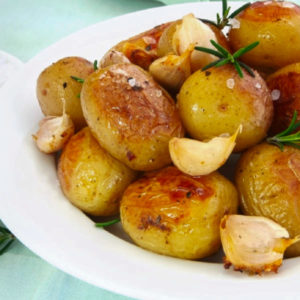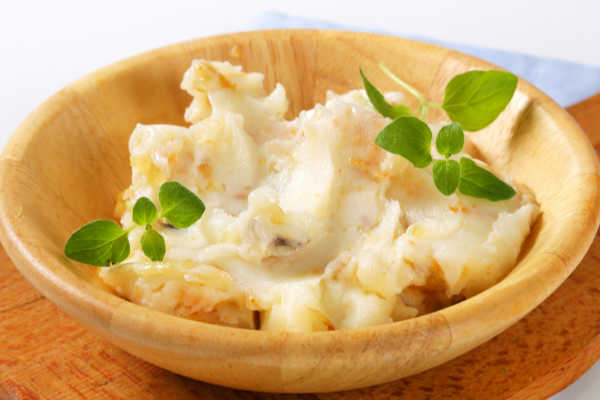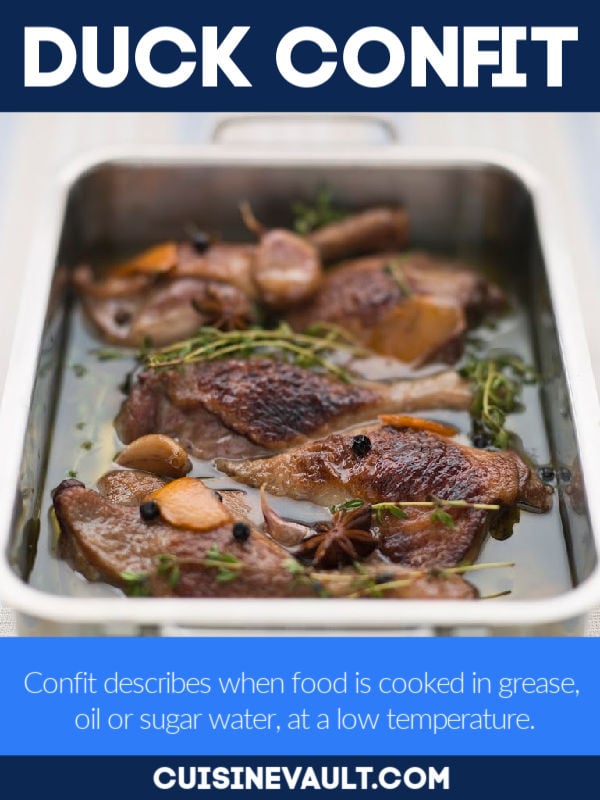Most people have eaten roast potatoes, but how about roasted potatoes made with duck fat? The extra ingredient gives an added depth of flavor along with a thick, crispy skin. The deep golden-brown skin maintains its crisp texture, unlike many recipes that use other types of oil.
Ducks are high in saturated and monounsaturated fats, which is useful in the kitchen. During cooking, duck fat remains stable, preserving its taste and ensuring that any ingredient it combines with also takes on that flavor. You'll notice that food cooked in duck fat doesn't taste greasy, which is an added bonus.
Do you enjoy baked potatoes?
We tested seven different cooking methods to find out which was best. Get the results here: Our review of seven baked potato methods.
Recipe

Duck Fat Roasted Potatoes
Ingredients
- 4 tbsp duck fat
- 2 tsp Kosher salt
- 1 tsp black pepper
- 2 pounds potatoes
- 6 rosemary sprigs
Instructions
- Preheat oven to 450°F.
- Peel the potatoes, using a regular peeler or you can make your life easy with an electric potato peeler.
- Add the fat to a roasting tray or baking sheet then sprinkle with salt and pepper. Place in the oven.
- Meanwhile, boil the potatoes in a large pot of boiling water for 10 minutes or until they are starting to soften, but not completely cooked. Remove from heat and drain out water.
- Carefully place the potatoes into the duck fat using tongs then roast for 25 minutes or until nicely browned. Turn the potatoes over and roast for a further 20 minutes until crisp.
- Garnish the potatoes with rosemary and serve.
Notes

Table of Contents
Where can I find duck fat?
Do you enjoy cooking duck at home? Your best option is to keep the leftover juices from the pan you used to cook the poultry. It will be a clear, runny liquid that can easily be poured into a container for later use. Once refrigerated, the liquid hardens and turns white. Use these leftovers for adding flavor to meat or vegetables.
If you don't usually cook duck, then your best option is to pay a visit to your local supermarket. In the chilled section, you will usually find pots of duck fat available. Alternatively, chicken shops often stock this item. Traditionally, this was an expensive product to buy. But, in recent years the price has become much more reasonable.
It's important not to cook this dish in advance as the crispy exterior will turn an unpleasant soft and chewy texture. Be sure to time your potatoes to be served immediately after cooking them.
Do you have leftover duck fat?
If you're looking for new ideas for how to use duck fat, then a confit is one of the best uses we can recommend. This technique requires enough liquid fat to submerge the meat or vegetables you want to cook. For example, add a few pieces of chicken to a dish then submerge them in liquid fat. Now you can slow-cook the meat on a low heat. The result is tender meat that doesn't dry out.
 Tips for making the best potatoes
Tips for making the best potatoes
Boil before roasting
If you boil the vegetables before adding them to the oven them, it results in perfectly cooked insides. Be careful not to take them too far in the water as they'll become dry and floury.
Choose the right potato
Choosing the right potato will make a big difference to the final result. The best options are flour potatoes like Maris Piper or King Edward. If you want to read all about the various types of potatoes, then be sure to check out our helpful guide: popular potatoes and their uses.
Reuse the fat
Once you remove the potatoes from the oven, strain the fat back into a container and refrigerate until next time. These lipids will store for several months.
Final words
If you're looking for a new way to cook potatoes then using duck fat is a winning option. The crispy texture and added flavor is delicious. Don't be put off by the fact it's made of duck - the flavor is quite subtle and few would find it overpowering or unpleasant. This is a coking option for practically anyone that enjoys a well-cooked potato.
What other uses do you have for duck fat in the kitchen? Let us know in the comments below if you've used this type of fat for other culinary uses.

Leave a Reply